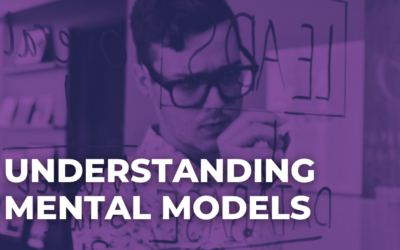 How or where do you find inspiration?
How or where do you find inspiration?
I look for inspiration all over the place but often times talking with and collaborating amongst really talented people can be the best inspiration. I just got back from SXSW Interactive in Austin and I am having a hard time prioritizing the crazy ideas I have gotten from all the ridiculously talented folks that I met.
Who is the biggest influence on your work right now?
I love the stuff that Meagan Fisher (http://owltastic.com/) is doing. Sometimes I just sign on Dribbble to check out what she is up to because I know it will be amazing. Doug Avery (who designed http://www.nationalgeographicexpeditions.com but has no personal portfolio) has also been a really big influence in my approach for designing websites. I had the honor of working with him and he taught me a lot about creative CSS and unique photoshop techniques. Doug’s integrated process of designing and building websites merges technology with art; it is calculated and clever, learning from him has had an enormous hand in my growth as a web designer. I have also been a long time fan of Ian Coyle (http://iancoyle.com), he invents a new kind of experience every time he designs a “user experience”. He rocks letterpress and javascript, a true hybrid of the web and of design in general.
Where are your “design roots”? Print or Web?
I went to school and learned mostly print and packaging design. I got a BFA and took a lot of classes in painting, metal jewelry, fabric pattern design, and photography. I really thought I could swing it as a painter for a short time, but am super glad I didn’t do that because I would be starving right now.
How important is it to know the history of design?
I find a lot of inspiration in the history of design. I am sure there are plenty of great designers out there who get away with not knowing it, but I feel like you are closing yourself off to a lot great ideas if you don’t look into it. I have been following @DesignFacts and it is a nice way to inject a little history into my daily web geekery.
Serif or Sans?
That really depends on a lot of factors, but I do enjoy the challenge of dressing down a serif font.
Do you code and design? Are you a “Hybrid”?
I do & I guess I am. I was fortunate to have the opportunity to learn CSS & HTML from my amazingly patient coworkers and friends at my first job as a “web designer”. I stop short of JS, but really envy those who are great visual designers and can rock that too. Knowing HTML & CSS really feels empowering as a web designer because I can not only communicate with developers better, but I also know how to push certain boundaries. I love sneaking CSS3 in wherever I can get away with it.
What’s your favorite part of the creative process?
Brainstorming and talking with the client. Most of the magic happens when people get involved in the process, I am a firm believer that the best ideas come from collaboration. I really love solving problems and seeing a difference, especially in redesigns.
What makes your creative process different from everybody else?
I am very interactive. I ask a lot of questions and get really involved. Some designers dislike interfacing with clients but I absolutely thrive on it. One of the biggest perks to being a designer is that you get to learn so much about what other people, industries, and organizations do so that you can communicate it properly. Everyone has a story and I love learning about that story and then bringing it to the web.
What do you see as the single biggest shift in the evolution of design over the past 5 years?
Just in terms of web design I was looking at some stuff I had done about 5 years ago and now, and the change in screen resolutions and connection speeds has really had a vast impact on the look and feel of sites. Sites now are wider, more visually interesting and utilizing better methods to display typography. When looking at the history of design you can see so many key progressions in it’s evolution and they are generally marked with a breakthrough in technology. Design and technology really progress hand and hand.
What’s the difference between User Experience and User Interface design?
Thats a hard question because it seems to me that titles all mean very different things in different contexts. It depends on the context.
What makes one a web design professional?
The specific skill set is debatable, but I believe that a real web design professional has an authentic passion for the web and has managed to turn that into a career where people pay them for their services. You can’t really design for the web if you don’t use it yourself. So maybe you know HTML/CSS maybe you don’t, if you design websites that work and you know they work because you passionately USE the web, then you are a web design professional.
What are designers/developers doing right (or wrong) in the web 2.0 world?
Designers are putting themselves in the place of the user, really thinking about how they would approach the site and what interaction or content may be valued to them. Wrong? Well, some designers do just the opposite. There is nothing more frustrating than a site that was clearly designed to only satisfy the ego of the designer.
What’s your favorite flavor of design or development programs/languages?
I like CSS (& CSS3). I use TextMate for my personal projects but really find Coda great when I am working with a team of developers. I design my comps in Photoshop but do all of my vector work in Illustrator.
What is your favorite book?
Thinking with Type by Ellen Lupton
What is your favorite movie?
The Royal Tenenbaums (go Futura!)
Who is your favorite musical artist (or What musical artist are you listening to the most right now?)
I love Janis Joplin. I have been listening to the Rolling Stones a lot lately.
About Samantha Warren
Samantha Warren’s goal is a site that’s bold, exciting, usable, and well-built. Sometimes that means she’s obsessing over the perfect typeface to tell the story, while other times she’ll be crunching on the markup and styles behind the scenes. A Senior Web Designer at Phase2 Technology in the Washington, DC area, recent years have found her working for a variety of clients including National Geographic, Choice Hotels International, and The National Basketball Players Association.
Her passion for design and the web doesn’t end at quitting time. She has been published in .NET Magazine, regularly speaks at industry events including SXSW Interactive, and is on the Board of the Art Directors Club of Washington DC. When she is not doing any of the above you can find her enthusiastically teaching typography and web design at the Center for Digital Imaging Arts at Boston University. Once she gets home, she writes about design and the web on her blog at badassideas.com.
twitter: @Samanthatoy





I love these little interviews on UMS, so inspiring, really fun and they give the reader a unique insight into the mind and constitution of someone who creates beautiful designs. They make me want to strive that much harder to reach the skill and craftsmanship that they exemplify.
And as always, my favorite questions are always the silly ones (ie favorite book, music, serif/sans serif)
amazing job guys.
Hey, thanks Isaac! We have some pretty good ones lined up for the near future as well.